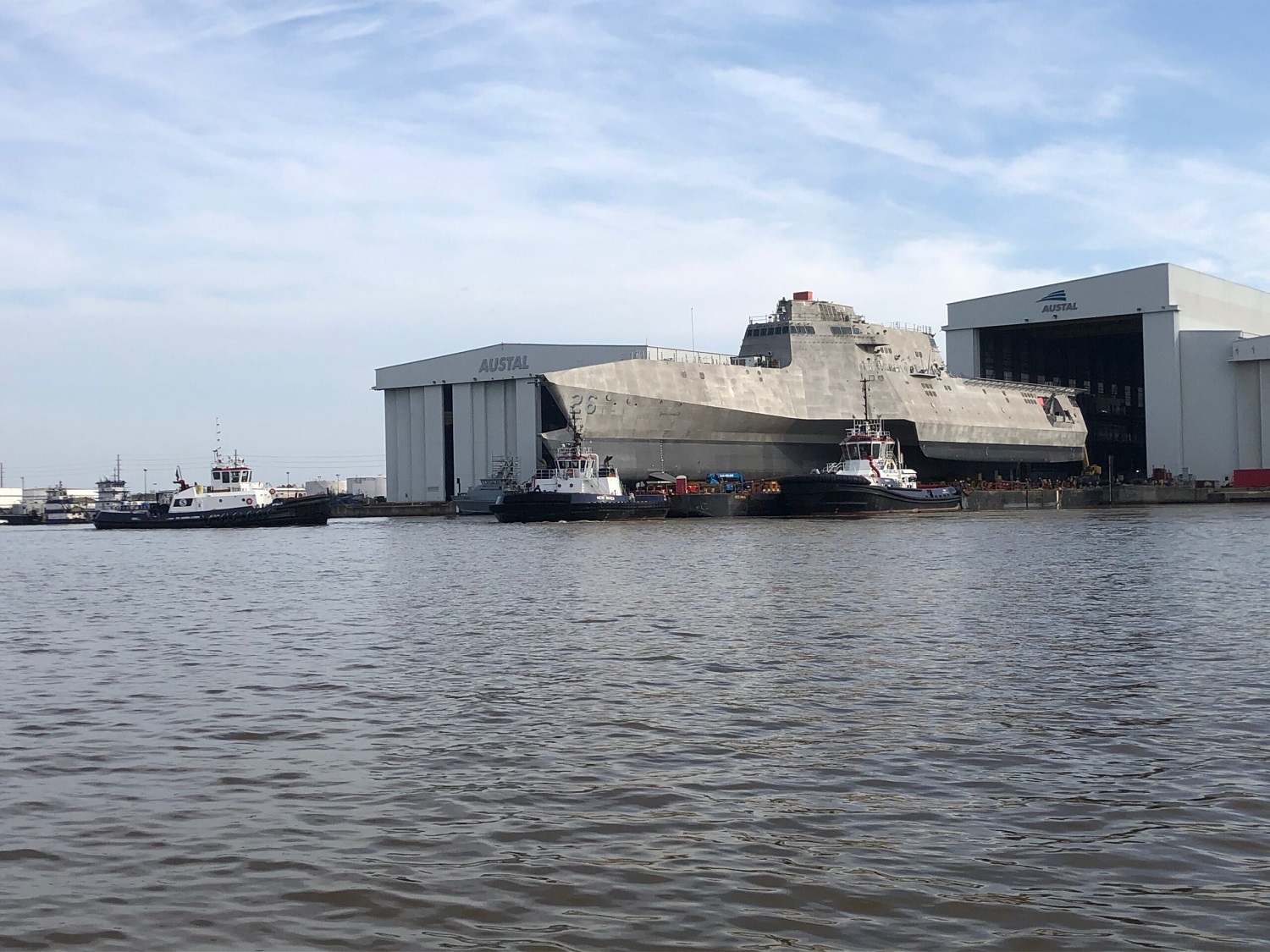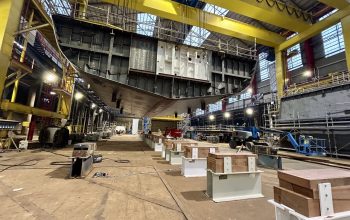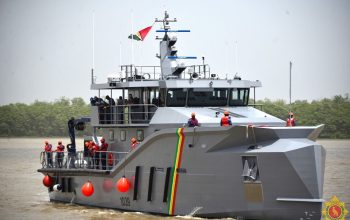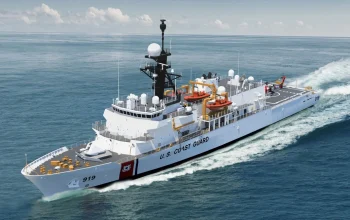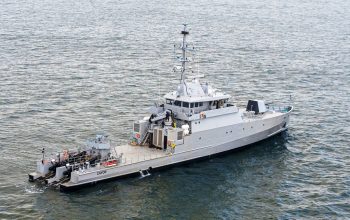The future USS Mobile (LCS 26) successfully concluded its acceptance trial in the Gulf of Mexico Sept. 25 after a series of in-port and underway demonstrations. The U.S. Navy conducted comprehensive tests of the Independence-variant littoral combat ship’s systems during the trial, spanning multiple functional areas including main propulsion, auxiliaries and electrical systems. LCS 26 also performed a full-power demonstration, steering and quick reversal, anchor drop test and combat system detect-to-engage sequence. The acceptance trial is the last significant milestone before delivery of the ship to the U.S. Navy, currently planned for October. USS Mobile (LCS-26) will be an Independence-class littoral combat ship of the United States Navy. Mobile is currently being built in Mobile, Alabama by Austal USA.
The Independence-class design began life at Austal as a platform for a high-speed cruise ship. The principal requirements of that project were speed, stability and passenger comfort, and Austal’s team determined that the trimaran hull form offered significant passenger comfort and stability advantages over both a catamaran and a monohull. The high-speed cruise ship project evolved into Austal’s commercial high-speed trimaran ferry HSC Benchijigua Express. The ships are 127.4 m (418 ft) long, with a beam of 31.6 m (104 ft), and a draft of 13 ft (3.96 m). Their displacement is rated at 2,176 tons light, 2,784 tons full, and 608 tons deadweight. Although the trimaran hull increases the total surface area, it is still able to reach sustainable speeds of about 50 knots (93 km/h; 58 mph), with a range of 10,000 nautical miles (19,000 km; 12,000 mi).
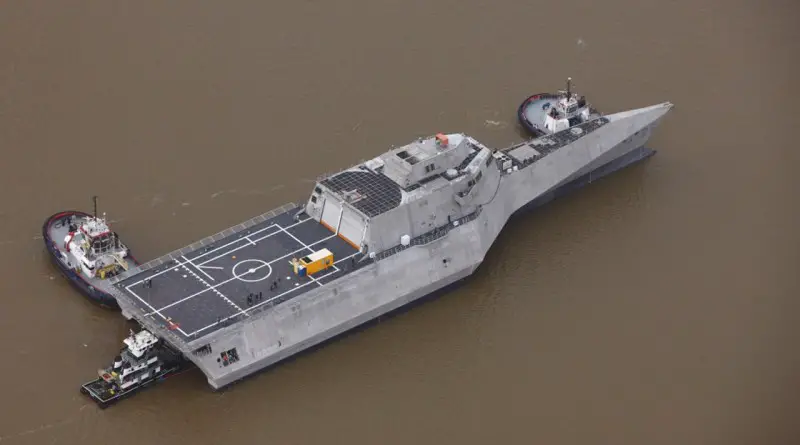
Following delivery and commissioning, Mobile will sail to its homeport in San Diego with sister ships USS Independence (LCS 2), USS Coronado (LCS 4), USS Jackson (LCS 6), USS Montgomery (LCS 8), USS Gabrielle Giffords (LCS 10), USS Omaha (LCS 12), USS Manchester (LCS 14), USS Tulsa (LCS 16), USS Charleston (LCS 18), USS Cincinnati (LCS 20), USS Kansas City (LCS 22), and USS Oakland (LCS 24). Four additional Independence-variant ships are under construction at Austal USA in Mobile. Final assembly is well under way on Savannah (LCS 28). The modules for Canberra (LCS 30) are erected. Additionally, Austal is fabricating modules for Santa Barbara (LCS 32) and fabrication has started on Augusta (LCS 34). Kingsville (LCS 36) and Pierre (LCS 38) will begin fabrication in 2021.
The Independence class is a class of littoral combat ships built for the United States Navy. The standard ship’s company is 40, although this can increase depending on the ship’s role with mission-specific personnel. LCS is a highly maneuverable, lethal and adaptable ship designed to support focused mine countermeasures, anti-submarine and surface warfare missions. The Independence-variant LCS integrates new technology and capability to affordably support current and future missions, from deep water to the littorals. LCS is now the second-largest surface ship class in production, behind the Navy’s DDG-51 Arleigh Burke-class destroyer program. In 2019, three LCSs were delivered to the fleet and four will be delivered in 2020 — a shipbuilding pace not seen since the 1990s.
